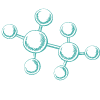FAQ
About Folium Labs

We are a Montreal-based biotechnology company focusing on the development of novel drug and nutrient delivery platforms that provide a significantly improved bioavailability and targeted delivery of active ingredients.
What is the SSRM technology?

Solid State Reactive Mixing (SSRM) - proprietary process to create highly bioavailable, water-soluble molecular complexes. SSRM technology increases bioavailability of active ingredients by 4-10 times depending on the ingredient.
How SSRM works?
SSRM allows the creation of molecular complexes of active ingredients with natural biopolyments. The key biopolymer in SSRM is Hyaluronic Acid (HA), which has multiple applications in human biology.

What Is Hyaluronic Acid?

It is a non-toxic, non-immunogenic, and non-allergenic water-soluble organic molecule. It’s been discovered, that under certain condition. HA can form molecular complexes with various compounds and become an excellent drugs and nutrients delivery vehicle.
What It’s Used For?

The complexes can be used in nutraceutical formulations, pharmaceuticals, cannabis products, functional foods and beverages. When purchasing a dietary supplement, consumers automatically assume that they will benefit from it, but this assumption is not always justified. The problem is that quite a few supplements contain limited or no bioavailable ingredients at all.
Examples of ingredients with poor bioavailability and where SSRM can be utilized
There are dozens of ingredients that posses very potent therapeutic benefits but are poorly absorbed by our bodies.
 CURCUMIN has been confirmed to exhibit very poor bioavailability, with many studies showing very low, or even undetectable, concentrations in blood and extra-intestinal tissue. Although piperine somewhat improves bioavailability of curcumin, it has its own sometimes significant side effects, e.g. it may cause gastrointestinal side-effects and, potentially, bleeding, at somewhat higher-than-suggested doses.
CURCUMIN has been confirmed to exhibit very poor bioavailability, with many studies showing very low, or even undetectable, concentrations in blood and extra-intestinal tissue. Although piperine somewhat improves bioavailability of curcumin, it has its own sometimes significant side effects, e.g. it may cause gastrointestinal side-effects and, potentially, bleeding, at somewhat higher-than-suggested doses.
 MEDICINAL MUSHROOM (Reishi, Chaga, Cordyceps, Maitake and Coriolus, to name a few). The reason for the limited bioavailability is that mushroom cells are made of poorly absorbable chitin, the same material that covers insects, lobsters and crabs.
MEDICINAL MUSHROOM (Reishi, Chaga, Cordyceps, Maitake and Coriolus, to name a few). The reason for the limited bioavailability is that mushroom cells are made of poorly absorbable chitin, the same material that covers insects, lobsters and crabs.
 CANNABINOIDS are lipophilic compounds that have very poor oral bioavailability. Only 5% of cannabidiol (CBD) is absorbed when consumed orally. The rest is simply wasted. SSRM demonstrated in preclinical trials that it can improve bioavailability of CBD by at least 800 percent.
CANNABINOIDS are lipophilic compounds that have very poor oral bioavailability. Only 5% of cannabidiol (CBD) is absorbed when consumed orally. The rest is simply wasted. SSRM demonstrated in preclinical trials that it can improve bioavailability of CBD by at least 800 percent.
What is the difference between micelles, liposomes and SSRM naturally self-assembling colloids?
 Liposomes are vesicles and composed of a phospholipid bi-layer membrane surrounding an aqueous core. Fat-soluble active substances can only be solubilized within the bi layer membrane, thus the loading capacity is limited and lower compared to SSRM.
Liposomes are vesicles and composed of a phospholipid bi-layer membrane surrounding an aqueous core. Fat-soluble active substances can only be solubilized within the bi layer membrane, thus the loading capacity is limited and lower compared to SSRM.
